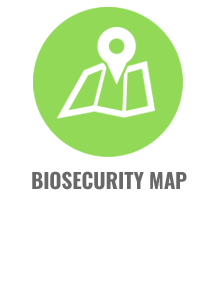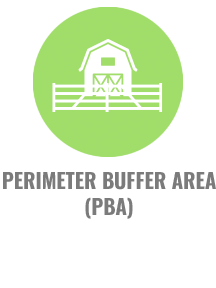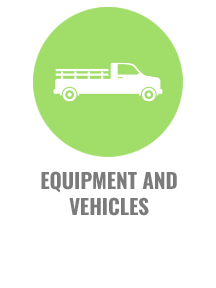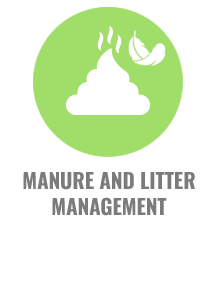Manure & Litter Management
Introduction
Your farm’s enhanced biosecurity plan will include a “Manure and Litter Management” section that describes. This is important because water that has been exposed to wild birds or other pests can be sources of contamination. This is particularly true of water supplied from surface sources such as lakes or holding ponds.
When writing the Manure and Litter Management section of your plan you may find it useful to read examples extracted from other plans.
Click on the items below to view some potential language (written as blue text in boxes) to draw from as you develop your own daily or enhanced plan, specific for your own farm. Such example blue text is only a starting point and may not be appropriate for your farm or meet your state’s requirements.
This section will guide you through:
- The best practices for transporting manure and litter
- Limiting attraction of wild birds, rodents & insects
- Minimizing on farm contamination from manure and litter
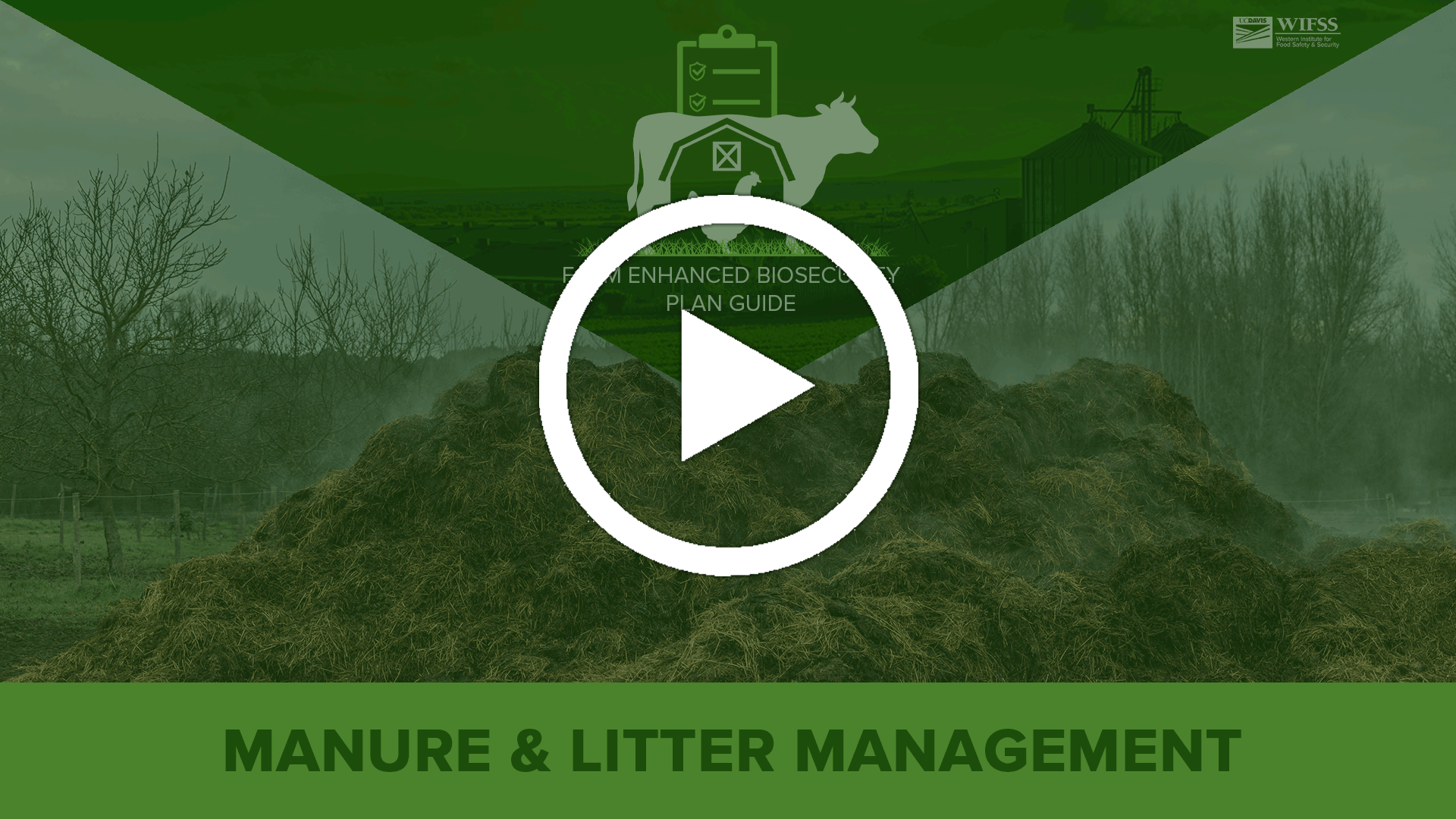
Fact Sheet: Manure and Litter Management
Produced by Iowa State University’s Center for Food Security and Public Health this one-page fact sheet highlights the It is available in English and Spanish.
Detailed Description: Manure and Litter Management
Produced by Iowa State University’s Center for Food Security and Public Health, Section 9 of the Information Manual for Implementing Poultry Biosecurity provides a detailed two page description.
Enhanced Biosecurity
Manure and spent litter are considered a high-risk biological byproduct during an FAD/NAD outbreak. All manure hauling activities within the Control Area will be restricted by the IMT. Premises should have the ability to store manure for at least 30 days. It is recommended the premises have the capability to dry and compost the manure onsite. Any manure hauling will be approved and permitted through the IMT on a case by case basis.
Requirements:
- The IMT will only allow manure hauling for premises that do not have the capacity to store or compost manure.
- The premises will need to provide documentation that they have reached capacity or will reach capacity within 10 days, in order to secure permission for manure movement.
- The IMT will establish conditions for transporting manure with a Product Movement Permit.
Provide the premises litter/manure handling procedures (SOP) during an NAD/FAD outbreak that meets the above requirements during Enhanced Biosecurity Plan activation:
Manure cleanout occurs at the end of the economic life of the house and upon depopulation of a flock, about twice a year. The manure/spent litter is transported on farm-specific vehicles to a drying site located on property owned by and adjacent to the farm, but outside the farm’s PBA perimeter. The location of the drying site and the routes used for transport are indicated on the farm’s biosecurity map.
After delivering manure/litter to the drying site, the farm-specific vehicles used are not permitted to cross the perimeter and return to the PBA until having completed Cleaning and Disinfection at the farm’s sole C&D station, located at the front gate. Outside the perimeter, and after drying, the manure/litter is removed by ABC Composting Enterprises to a composting site owned and operated by that company.
In the event of an outbreak, the regulatory Incident Management Team (IMT) will only allow manure hauling from premises that no longer have the capacity to store or compost manure. Farm management estimates that manure/litter generated by the farm could be stored at the drying site for up to 10 months.
In the event of a prolonged outbreak, manure would ultimately need to be moved from the drying site to the compost site by ABC Composting Enterprise. At least 10 days prior to the drying site reaching capacity, farm management will contact the IMT and provide documentation for the need for transport. Farm management will work with the IMT and ABC Composting to obtain a Product Movement Permit and establish the conditions under which that transport could occur.



